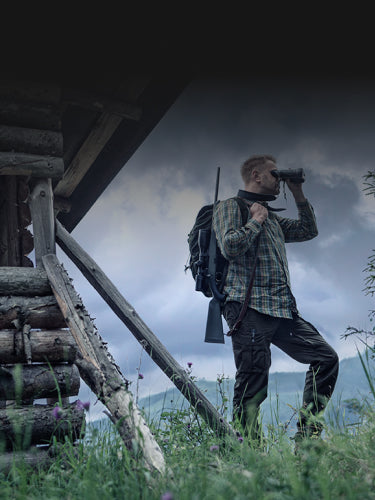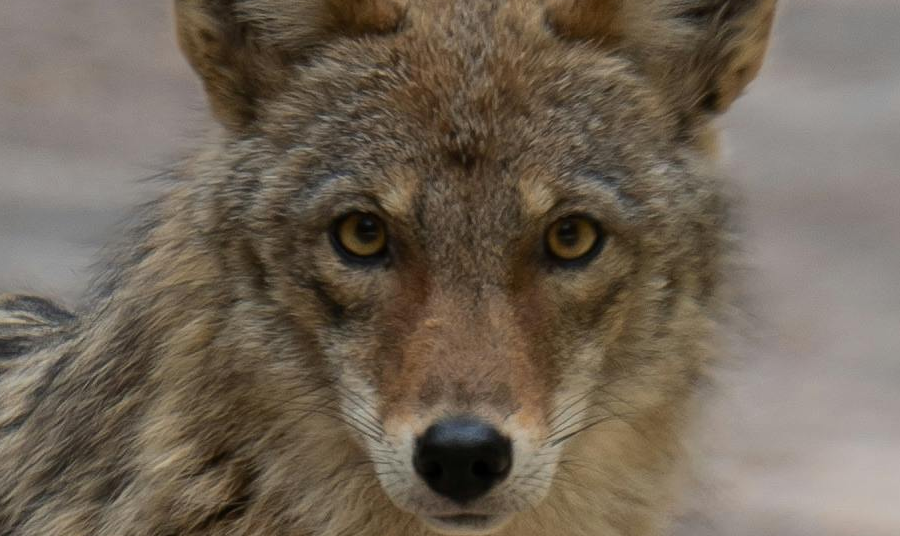Coyotes are among the most cunning predators a hunter can pursue. Their sharp eyesight, acute sense of smell, and heightened hearing make them an extremely challenging quarry. To successfully hunt coyotes, you must master the art of staying hidden, paying even more attention than you would if you were hunting deer or hog. The coyote has a better sense of smell than a wild hog and a better sense of hearing than the most skittish deer. Mastering coyote hunting requires understanding of camouflage, scent control, and strategic positioning, especially when hunting at night when the wily animals are most active. However, hunters have the upper hand with advanced thermal optics and tools that make luring them in so much easier than stalking.
The Advantages of Night Hunting
Coyotes are naturally nocturnal, making nighttime the most productive time to hunt. They’re more active, less cautious, and more likely to respond to calls. However, their excellent night vision and heightened senses can make this a daunting task without the right gear.
- Thermal Imaging for Night Hunting: Thermal optics give hunters the ability to spot coyotes by their body heat, even in complete darkness. This eliminates the need for visible lights that might spook your prey.
- Full-Color Day and Thermal in One Device: The Thermion Duo DXP55 and Merger Duo NXP50 allow you to switch between full-color daytime vision and thermal vision, ensuring you’re prepared no matter the lighting conditions. During the day, use full-color mode to scout terrain and track movement, and at night, rely on thermal imaging to detect even the faintest heat signatures.
- Long-Range Visibility: These devices provide exceptional detection ranges, making it easier to spot coyotes before they spot you, whether they’re lurking in dense brush or crossing open fields. Both units have detection ranges beyond 1,900 yards, providing valuable intelligence about your surroundings.
Mastering Camouflage
Camouflage is one of the most important elements of stealth whether you’re hunting during the day or at night:
- Day vs. Night Camouflage: In daytime hunts, match your clothing to your surroundings. At night, focus less on color and more on breaking up your silhouette with textures and patterns.
- Face and Hands: Cover reflective areas with camo face paint or a mask. Even at night, a reflective face can catch the glow of moonlight or a thermal optic's IR illuminator.
- Ghillie Suits for Night: For hunters who remain stationary, ghillie suits provide additional concealment against coyotes scanning the terrain, but be warned that they can get extremely uncomfortable in warm weather.
Managing Your Scent at Night
A coyotes’ sense of smell is just as powerful under the cover of darkness. Proper scent control can make or break a hunt:
- Avoid Strong Scents: Even at night, coyotes can pick up on human odors carried by the wind. Use scent-free detergents and sprays on your clothing and gear.
- Use the Wind to Your Advantage: Position yourself downwind of where you expect coyotes to approach. Ideally, the wind should be in your face. Hunting at night often means lighter winds, so check your scent's path regularly with a wind checker.
- Layered Scent Control: Use unscented soaps and sprays before heading into the field, and carry additional scent-eliminating sprays like Scent Killer® to refresh your clothing mid-hunt.
Movement and Light Discipline
At night, movement is even more detectable, and even the smallest light emissions can be seen for hundreds of yards in all directions. Coyotes are highly sensitive to unnatural sounds and movements in their environment.
- Minimize Movement: Keep still, especially when scanning with thermal optics. Quick, jerky motions are easily spotted by coyotes even in low light.
- Dark Equipment: Ensure all your gear is blacked out. The Merger Duo NXP50 automatically goes to sleep once you pull it away from your face to minimize conspicuous backlighting, while the Thermion Duo DXP55’s rubber eyecup does the same thing, allowing you to scan the terrain without creating unnecessary light.
- Use Natural Cover: Even at night, position yourself against natural barriers like rocks or trees to help conceal your shape.
Combining Gear and Tactics for Nighttime Success
The best results come from pairing advanced optics with sound hunting strategies:
- Set Up in High Traffic Areas: Coyotes are creatures of habit. Use thermal imaging to scout trails and water sources where they’re most likely to appear at night.
- Call Strategically: Coyotes respond well to distress calls, but at night, be mindful of using electronic calls sparingly to avoid arousing suspicion. Place the call unit upwind to direct the coyote’s attention away from you.
- Be Patient: Night hunting requires discipline and patience. Stay still, scan frequently, and let your optics do the work to identify movement.
Final Thoughts
Coyote hunting at night provides a unique challenge but also an unparalleled opportunity to take advantage of their nocturnal habits. Advanced optics like the Thermion Duo DXP55 and Merger Duo NXP50 give hunters a significant edge, allowing for accurate long range hunting either in the daytime or at night. Combine these tools with proper camouflage, scent control, and stealth tactics, and you’ll be well on your way to outsmarting even the most elusive coyotes.
To shop the Thermion family of Pulsar riflescopes, click here.
To shop the Merger family of Pulsar thermal binoculars, click here.





1 comment
I can personally say that being the proud owner of the Thermoin duo dxp 55 has taken hunting to the next level. That being said all the info you provided is so accurate that i have nothing to add except just to enjoy the hunt. There is nothing more i enjoy than to watch a coyote fall victim through my pulsar….